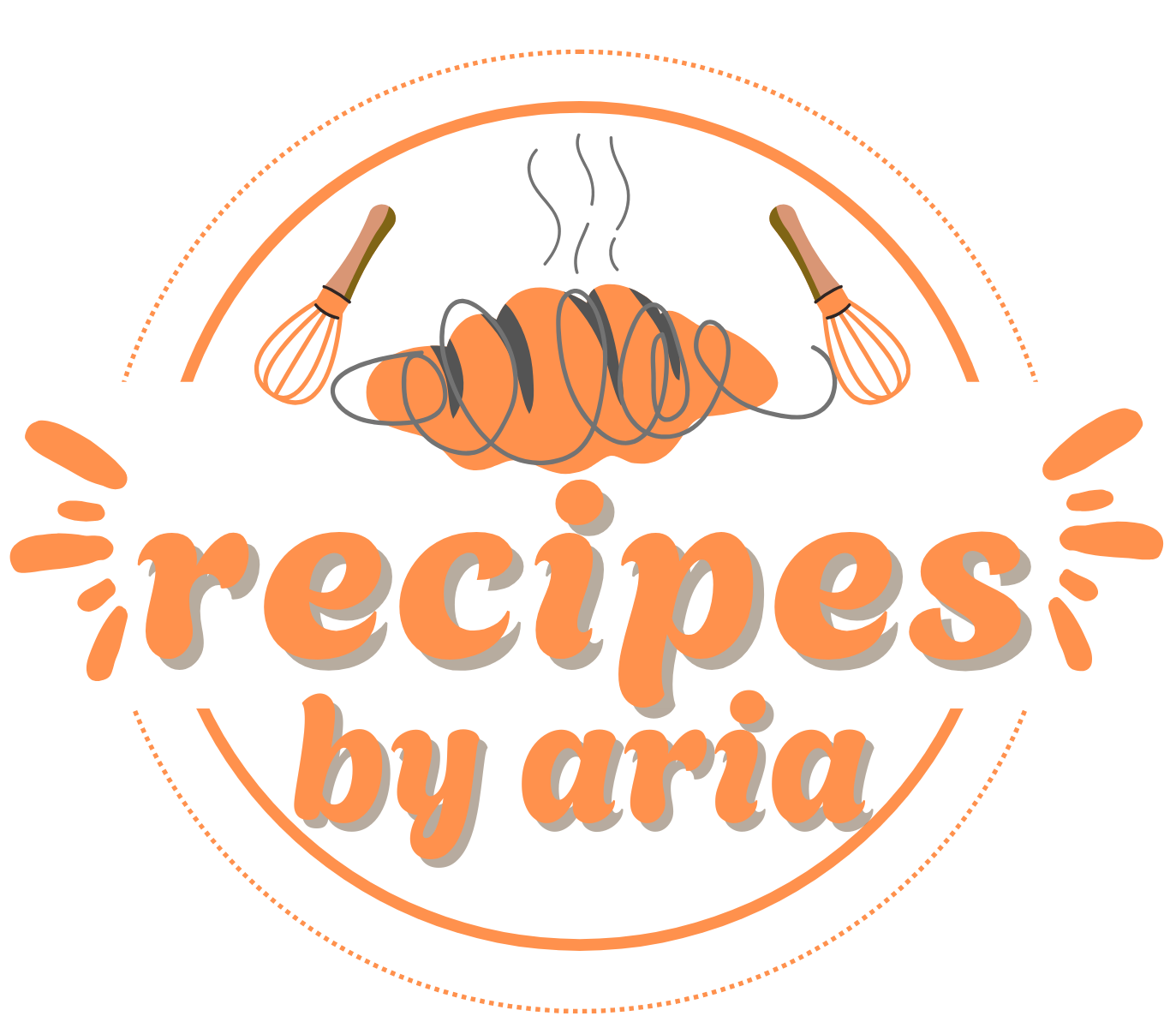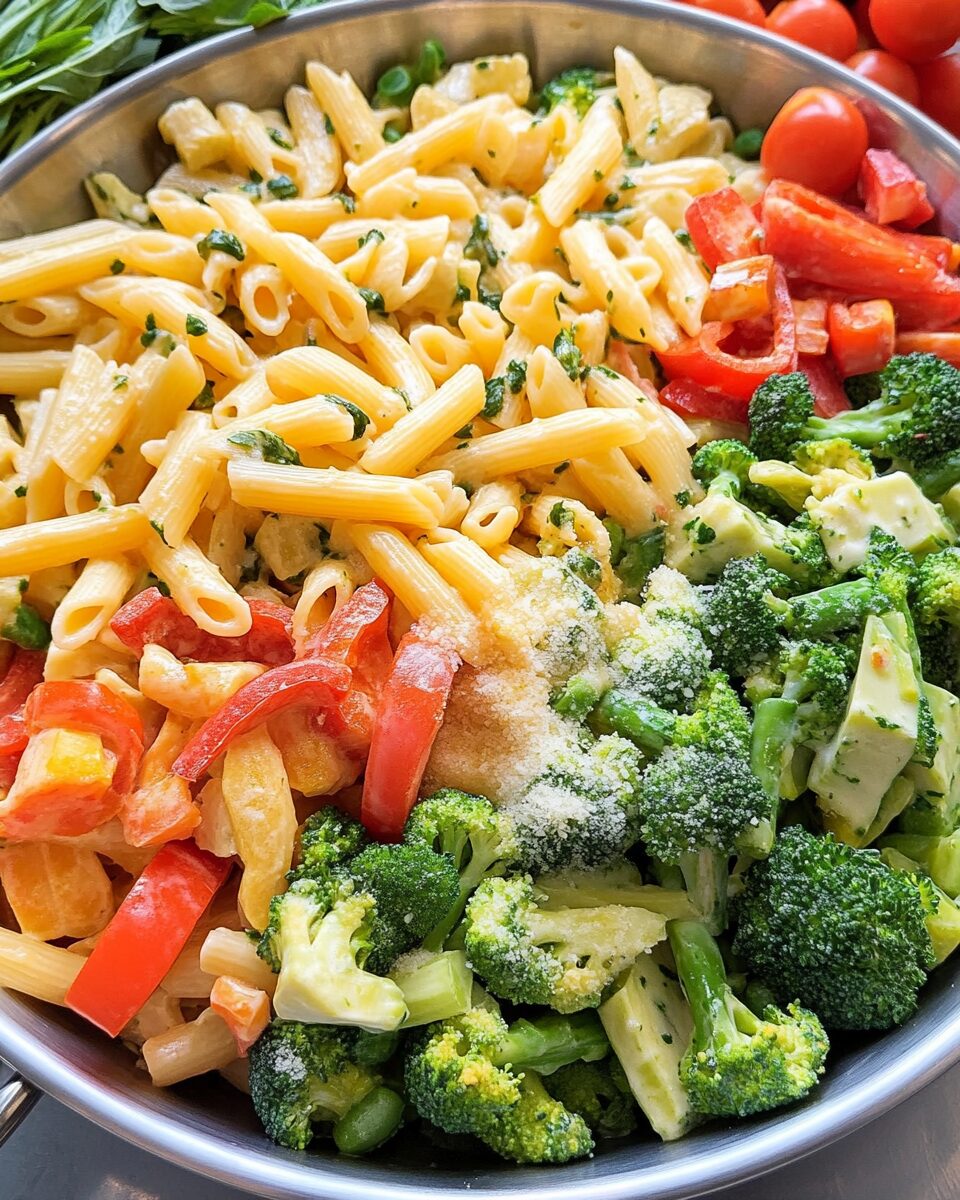Pasta Primavera is a classic dish that combines pasta with a medley of fresh vegetables, all enveloped in a light, flavorful sauce. Originating in the 1970s, this dish has become a staple for those seeking a vibrant and satisfying meal.
Full Recipe:
Ingredients:
-
Pasta:
- Penne, ziti, farfalle, or fusilli are excellent choices.
-
Vegetables:
- Broccoli, bell peppers, onions, zucchini, carrots, peas, and cherry tomatoes are commonly used. Feel free to incorporate other favorites like asparagus, mushrooms, or spinach.
-
Sauce Base:
- A combination of chicken broth and half-and-half creates a lighter cream sauce.
-
Cheese:
- Freshly grated Parmesan cheese adds a rich, savory flavor.
Preparation Steps:
-
Sauté Vegetables:
- Begin by cooking firmer vegetables like broccoli, onions, carrots, and bell peppers in olive oil over medium-high heat for about 3 minutes. Then, add softer vegetables such as zucchini, tomatoes, and peas, seasoning with salt and pepper, and cook for an additional 2-3 minutes. Remove from the skillet and set aside.
-
Prepare the Sauce:
- In the same skillet, melt butter and sauté minced garlic until fragrant. Stir in flour to create a roux and cook for 2 minutes. Gradually whisk in the chicken broth and half-and-half, bringing the mixture to a boil before reducing to a simmer. Over low heat, incorporate the grated Parmesan cheese and a splash of lemon juice to brighten the flavors.
-
Combine Pasta and Vegetables:
- Cook your chosen pasta according to package instructions until al dente. Toss the cooked pasta in the cream sauce, ensuring each piece is well-coated. Reintroduce the sautéed vegetables, mixing gently to combine and heat through.
Pro Tips:
-
Grate the Parmesan cheese from a block for optimal melting and flavor, as pre-packaged grated cheese may contain additives that hinder melting.
-
Add the cheese and lemon juice over low heat to prevent the sauce from becoming grainy due to dairy separation.
Pasta Primavera: A Fresh and Flavorful Classic
Pasta Primavera is a delightful dish that beautifully captures the essence of fresh vegetables combined with perfectly cooked pasta. This vibrant and flavorful meal has become a favorite among home cooks and restaurant chefs alike, thanks to its versatility, lightness, and the ability to be customized with seasonal ingredients. With its origins traced back to the 1970s, Pasta Primavera remains a beloved staple in Italian-American cuisine.
The Origins of Pasta Primavera
Despite its Italian-sounding name, Pasta Primavera is an American creation. The dish was first introduced in the 1970s by Sirio Maccioni, a renowned restaurateur, at his famous New York City restaurant, Le Cirque. The story goes that Maccioni and his chef friends experimented with fresh vegetables and pasta while on a trip to Canada. They later refined the recipe and served it at Le Cirque, where it quickly became a signature dish. Over time, it spread across the country and became a favorite in Italian-American restaurants.
While traditional Italian pasta dishes emphasize rich sauces, Pasta Primavera takes a different approach by allowing fresh vegetables to shine. The name “Primavera,” which means “spring” in Italian, perfectly describes the dish’s emphasis on fresh, crisp, and colorful vegetables.
Why Pasta Primavera is So Popular
One of the reasons Pasta Primavera has remained a popular dish for decades is its adaptability. It can be made in countless ways, using different types of vegetables, pasta, and even protein additions like chicken, shrimp, or tofu. Unlike heavy, creamy pasta dishes, Pasta Primavera offers a lighter and more refreshing alternative while still being filling and satisfying.
Another factor contributing to its popularity is its health benefits. Packed with nutrient-rich vegetables, the dish is high in fiber, vitamins, and minerals while maintaining a relatively low-calorie count. Many people also appreciate that it can be easily modified to fit different dietary needs, such as vegetarian, vegan, or gluten-free diets.
Variations and Customizations
Pasta Primavera is an extremely versatile dish, allowing for endless variations based on personal preferences and ingredient availability. Here are a few popular ways to customize the dish:
- Choice of Pasta: While traditional recipes use spaghetti or fettuccine, you can experiment with penne, farfalle, or even whole wheat and gluten-free pasta.
- Sauce Options: Some versions use a light olive oil and garlic sauce, while others incorporate a creamy sauce with Parmesan and heavy cream. A lemon and white wine reduction can also add a bright and zesty flavor.
- Seasonal Vegetables: Spring and summer vegetables like bell peppers, zucchini, asparagus, and cherry tomatoes are commonly used, but you can also try butternut squash, Brussels sprouts, or mushrooms in the fall and winter months.
- Protein Additions: To make the dish more substantial, grilled chicken, shrimp, or tofu can be added. These ingredients complement the fresh vegetables without overpowering the dish.
- Cheese and Herbs: Freshly grated Parmesan or Pecorino Romano enhances the flavor, while fresh basil, parsley, or thyme adds a fragrant and aromatic touch.
Tips for the Perfect Pasta Primavera
Although Pasta Primavera is relatively simple to make, a few techniques can elevate it to restaurant-quality levels:
- Use Fresh, High-Quality Ingredients: Since this dish relies on the natural flavors of vegetables, always opt for fresh, in-season produce. Organic and locally sourced vegetables often have the best taste and texture.
- Cook Pasta Al Dente: Overcooked pasta can become mushy and lose its appeal. Cooking pasta al dente ensures the perfect bite and helps the sauce cling to the noodles.
- Sauté Vegetables Correctly: Different vegetables have different cooking times. Start with firmer vegetables like carrots and bell peppers, then add softer vegetables like zucchini and tomatoes toward the end to maintain their texture and freshness.
- Balance Flavors: A squeeze of lemon juice or a splash of white wine can add brightness to the dish. Additionally, don’t forget to season with salt and freshly ground black pepper to enhance all the flavors.
- Toss Everything Together Just Before Serving: This helps maintain the crispness of the vegetables while allowing the pasta to absorb all the flavors.
Why Pasta Primavera is Perfect for Any Occasion
One of the best things about Pasta Primavera is its versatility when it comes to serving. Whether it’s a quick weeknight meal, a light lunch, or a dish for entertaining guests, it fits perfectly into any menu. It pairs beautifully with a variety of side dishes, such as garlic bread, a fresh green salad, or a glass of crisp white wine.
It is also a fantastic option for meal prepping. You can prepare a large batch and store it in the fridge for a couple of days. While it’s best enjoyed fresh, leftovers can be reheated and still taste delicious. For those looking for a cold pasta salad variation, Pasta Primavera can even be served chilled with a light vinaigrette dressing.
Conclusion
Pasta Primavera is a timeless dish that continues to bring joy to pasta lovers around the world. Its simple yet flavorful combination of fresh vegetables and pasta makes it a go to meal for many. Whether you prefer a creamy or light version, this dish is easy to customize and can be adapted to suit any dietary preference. Its vibrant colors and refreshing taste make it a celebration of seasonal produce, proving that sometimes, the best meals are the simplest ones. Next time you’re in the mood for a delicious and wholesome pasta dish, give Pasta Primavera a try you won’t be disappointed!






